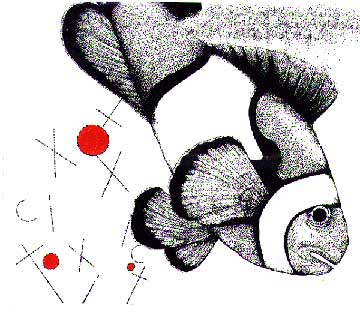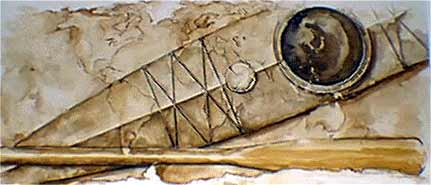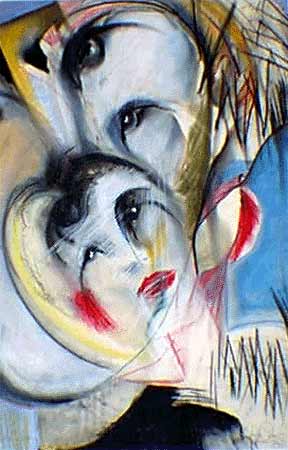Ana Eloisa Soto-Canino
 |
|
"Toxic Fish Poem" 1994, (pen and ink on illustration board) |
My name is Ana and I was born in 1963 in San Juan, Puerto Rico.
While in grammar school, high school and college, I ran a
parallel course of 11 years of formal training in the history,
theory, and practice of the visual arts. I trained in various
"schools" of thought and practice in drawing, watercolor, oil,
acrylic, pastel, lithography, etching, silk-screening, and of
course, computer art. I complemented this training with post-
college work in arts administration.
I invite you to approach three of my pieces through a new medium
-the computer. Computer technology now allows text to mediate the
relations between artist, artwork and art lover like never before.
In my past, a piece would take on a life of its own once it left
my hands. I came to know little, if anything, of that life. But
the new spatial and temporal proximity of text to art (and the
accessibility of that link to a new kind of audience), unleashes
a new dynamic. I hesitate, and yet I welcome it too.
Before I turn to the pieces themselves, I must send a big thanks
to Judy Wray of the Visual Arts League (VAL), who made this show-
and all of VAL possible. Thanks also to
Sarmad Abassi and Rinku Dutta for photographing my works, Kurt
Hobschaidt for framing, and Matt Gillham and his family--my family--
for all-around support. Thanks to all for being sincere admirers
and terrific friends. I dedicate the show to Mama and Mami who
sent me off to art classes they could barely afford, and to my brother
Jose, the maker, the genius.
|
"This work depicts several artifacts-an aboriginal kayak (which
would have been made with animal skin), the glassy bubble of a
modern compass, and a modern wooden paddle. You can also find
a parchment-like map of our planet, with the white North and
South Poles unraveling along the top and bottom margins of the
board. This watercolor is an exercise in "trompe l'oeil" (a
fooling of the eye), for its entire surface is in constant
flux; objects become the space that contains them and space
becomes objects. When you look at this piece, a particular part
of the surface will now be foreground, now middle ground,
now background. It all depends on how you "read" it. For example,
South America's Cape Horn appears as an integral part of the
"background" map where the Americas arise. But now, it is part
of a blotch of leather on the kayak's skin in the middle ground,
a space which itself can suddenly be perceived as South America.
And yet again it is the stain on the wooden handle of the paddle
floating in the foreground.
To create these perceptual shifts, I depicted a nature---wood,
leather, parchment---that could be painted with a limited range
of colors. The trick was to break with certainty. The finished
image, however, could not be so fluid that the onlooker could
lose "grounding" and become lost in pools of color. What I wanted
was a place that could be discovered. Figuratively, that is why
I left the compass as an abstraction--without lubber lines or a
compass rose. As you look at the piece, you will find additional
shifts, and perhaps different kinds of shifts, on your own. The
way you look at the world here can now go beyond my conscious control, and even beyond yours. You are free to occupy your own
ground and follow your own sense of direction while yet knowing that
the unexpected constantly arises, sometimes because I willed it,
but more often because I could not.
The handling of the medium itself is not new. I used basic,
long-established watercolor techniques familiar to watercolorists.
Still, technical challenges crept in. One of these challenges concerns the personalities of the pigments I used. I worked with
eight pigments, enough for a splash of fresh color, even for such
a narrow palette. Yet many of these pigments can be quite unforgiving.
They tend to "stain" the paper rather than "lift" from it. Lifting
is a wondrous property of many watercolor pigments--after having been
applied, they can be removed to varying degrees while wet or dry
(with a brush or sponge, for example). This lifting allows the artist
vast degrees of freedom in creating diverse effects. However, colors
that stain do not comply so readily. Staining colors tend to immediately
commit the artist to the mark. Therefore the artist must approach the
blank paper surface with an overall plan well ahead of a game notorious
for its uncertainties. This is true for watercolor generally, and more
so for the palette I chose. |



